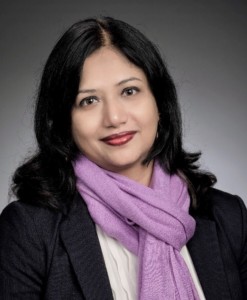PRAIRIE VIEW, Texas (June 8, 2021) – How will tissue engineering change the face of medicine over the next few years? Will there be a day in the near future when scientists will regenerate or repair organ tissue using specially designed biological materials and devices known as biomedical microelectromechanical systems, or BioMEMS?
Prairie View A&M Medical Academy research scientist Naznin Sultana, Ph.D., recently edited and contributed to a new textbook on this subject, Tissue Engineering Strategies for Organ Regeneration, published by CRC Press, Taylor & Francis Group. In addition to editing, Sultana contributed three chapters focusing on conductive polymers, biomaterials and scaffold manufacturing.
“When scientists from different corners of the world join hands, it results in something fascinating, a scholarly piece of work that will inspire many. I feel excited about the release of this book,” Sultana said. “We had authors from [the Massachusetts Institute of Technology], UK, India and Malaysia. I especially enjoyed the international networking with the scientists from the different parts of the world.”
The book has been two years in the making and focuses on the existing and future trends of tissue engineering as it relates to regeneration or repair. It stands as a comprehensive study of the recent improvements in biomaterials used in scaffold-based tissue engineering, as well as the tools and various protocols needed to design tissues and organs.
“This book is particularly focused on fabrication and evaluation of tissue engineering scaffolds for bone and skin tissue engineering, membranes for drug delivery, polymer degradation characteristics, cell-scaffold interaction, controlled release of biomolecules and drugs, antibacterial membrane fabrication and more,” said Sultana.
Chapters also provide an in-depth look at the principles behind numerous supporting technologies, including the application of BioMEMS in tissue engineering and the combination of organoid formation and three-dimensional bioprinting. This research provides an opportunity to develop viable and more affordable treatments for many organ and tissue diseases.
“The requirement for organ and tissue [repair] is a major clinical and socioeconomic need,” Sultana said. “Tissue diseases cause an estimated 300,000 unplanned hospital admissions in the U.S. each year. A bone graft using the patient’s own bone, typically from the chin, back of the lower jaw, hip, or shin, will mean two surgical sites on the patient’s body and typically costs $2,000 to $3,000 or more. Tissue engineering scaffold can be an alternative to autograft and allograft in a more economical way.”
The book includes a look at recent medical advances and strategies for regeneration, including three-dimensional microtissues in microcapsules, tissue reconstruction techniques and injectable composite scaffolds for bone tissue repair and augmentation. Each chapter was designed to be self-contained and focused on the latest tissue engineering strategies for organ restoration.
Sultana said the book will also serve as a reference for multidisciplinary researchers such as the advanced undergraduate and postgraduate students in biomedical engineering, chemistry, materials engineering, chemical engineering, mechanical engineering and even clinical investigators.
Sultana has published more than 60 Scopus-indexed research papers, serves on the editorial board of two international journals, serves as a reviewer for several ISI-indexed journals and is known for her original contributions of major significance to the field of biomedical engineering. With 22 peer-reviewed conference proceedings articles, she aims to be significantly involved in collaboration with other researchers around the world.
“The intentional global collaborative undertaken by Dr. Sultana in this latest research project demonstrates the passion that drives our research scholars here at Prairie View A&M University,” said Magesh Rajan, vice president of Research & Innovation. “As the pandemic has revealed, the more inclusive and diverse we are in gleaning from diverse research expertise, the greater to the possibility to impact more lives. Dr. Sultana’s ongoing exploration of tissue engineering and technology innovation through the partnership will continue to have an impact.”
Now that the book is complete, Sultana’s focus will be on extending her research on tissue engineering scaffolds and membranes.
“Nanobiomaterials toxicity and cell-biomaterials interactions in vivo is a serious issue. In my future work, I intend my prior experiments to cover the safety and ethical issues to develop more comprehensive protocols and analysis,” she said.
By Jocelyn Kerr
-PVAMU-

